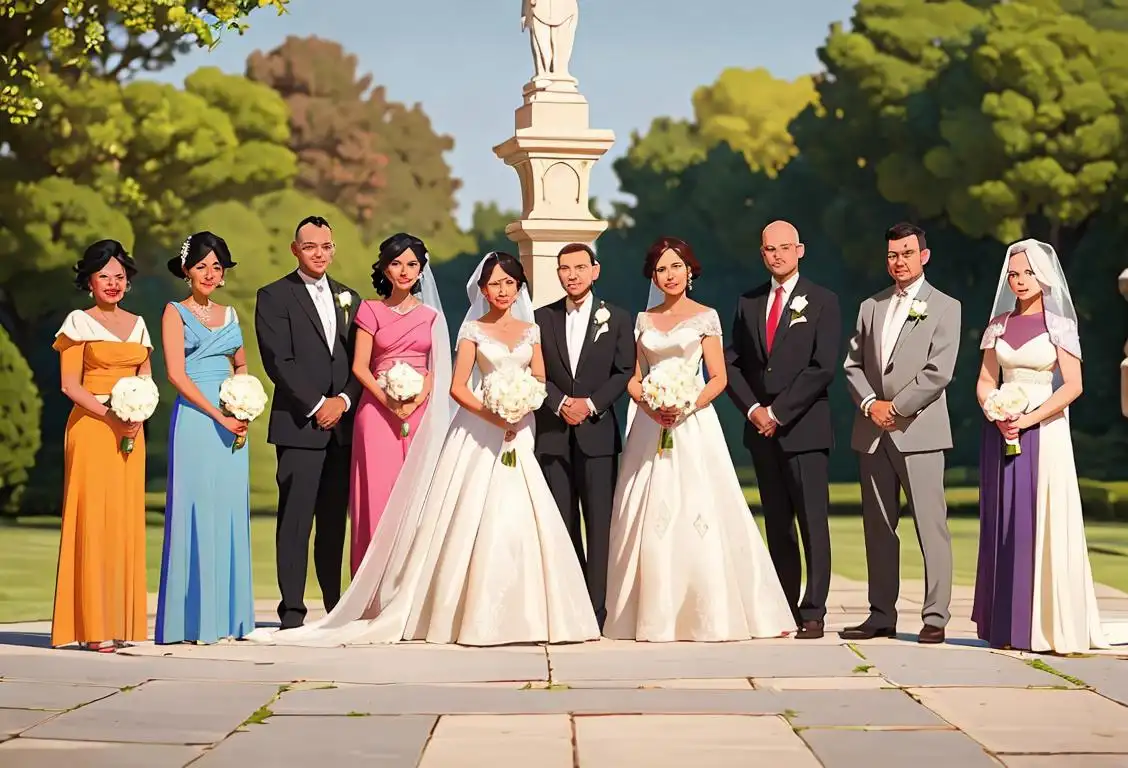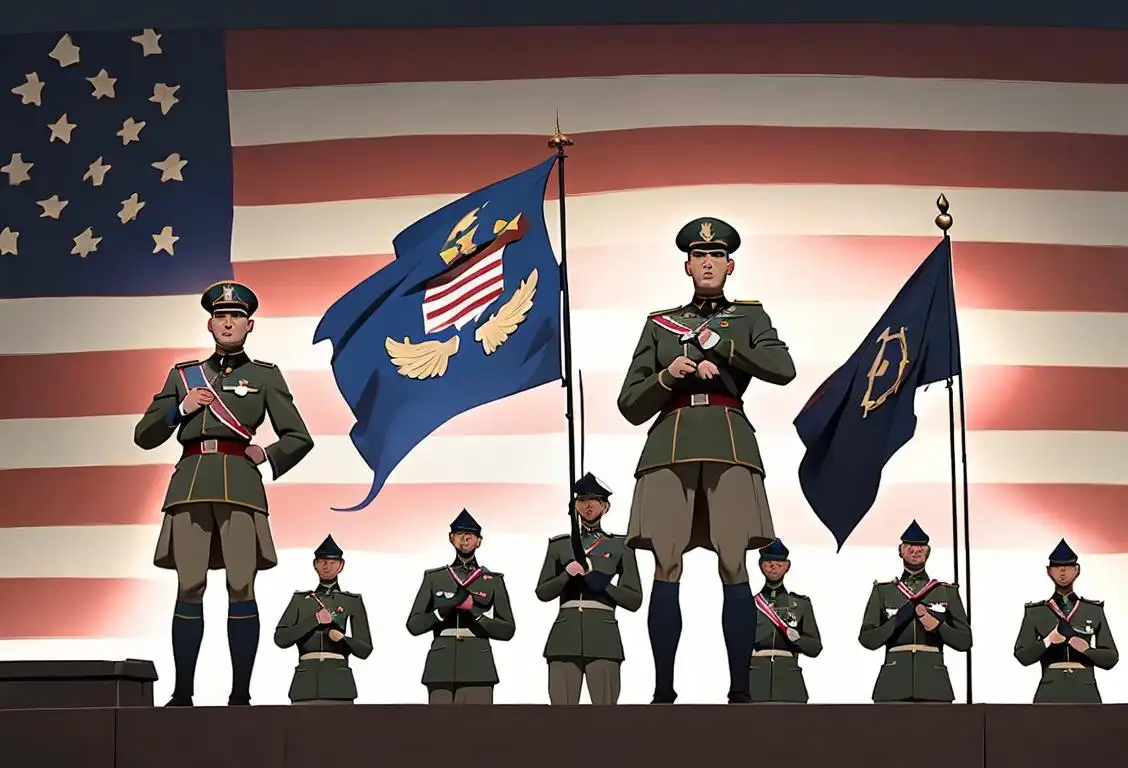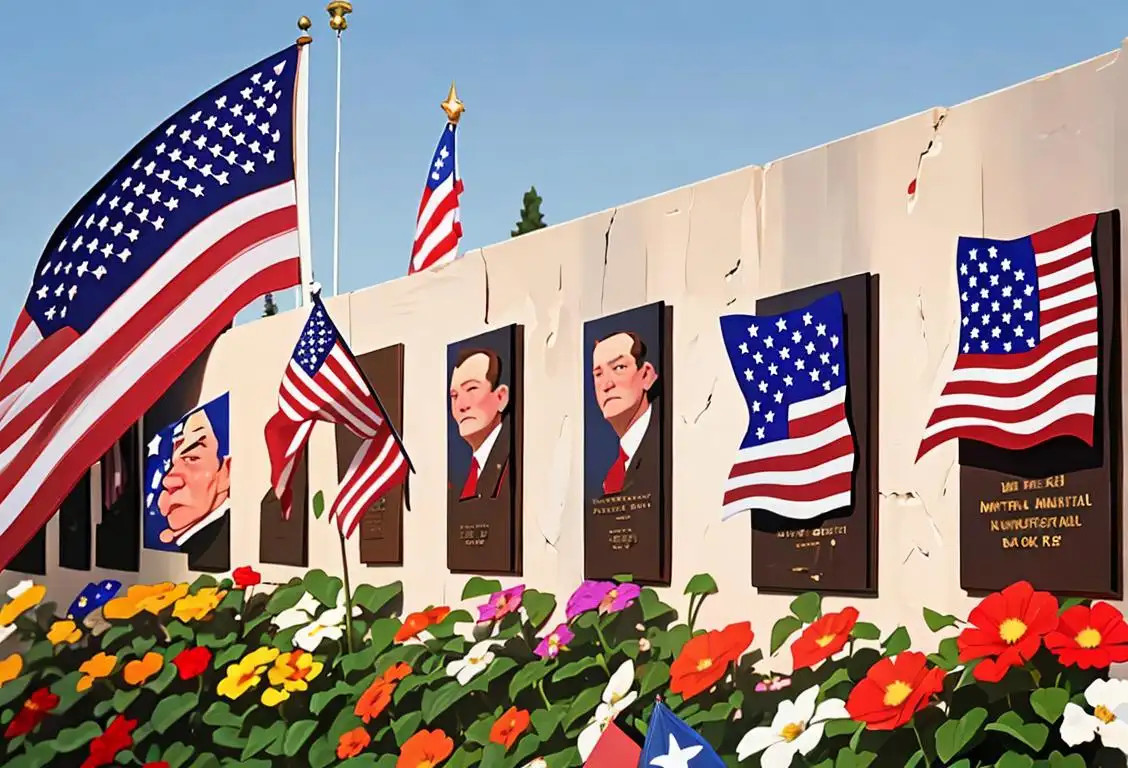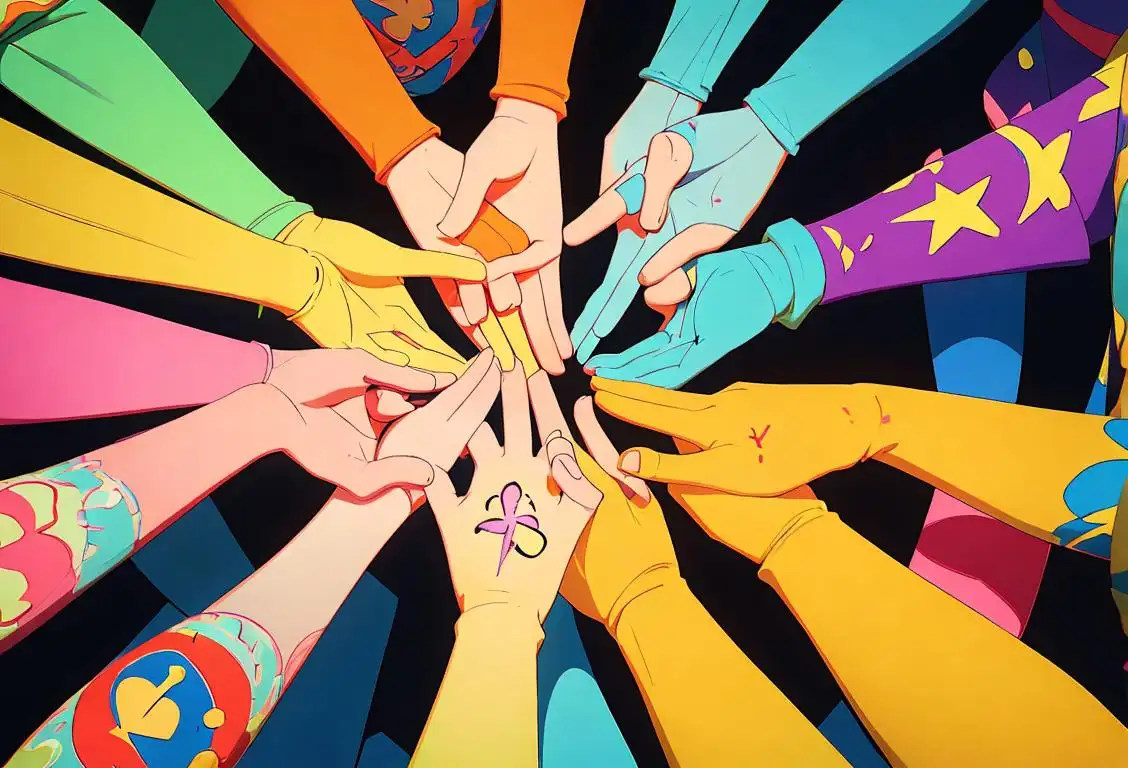National Freedom To Marry Day

Hey there, freedom-loving friends! Today, we are celebrating National Freedom to Marry Day, a day dedicated to recognizing and supporting the right for everyone to marry the person they love. Whether you're hitched, happily single, or still searching for the one, this day is all about spreading the love and embracing equality.
When is Freedom To Marry Day?
It's national freedom to marry day on the 12th February.
A Brief History of National Freedom to Marry Day
Love is a beautiful thing, but it hasn't always been easy for everyone to commit to their forever person. That's why National Freedom to Marry Day serves as a reminder of the progress we've made in the fight for marriage equality.
The origins of this special day can be traced back to the early 2000s, when advocates and supporters of same-sex marriage sought to raise awareness and promote equal rights for LGBTQ+ couples. The day not only celebrates the victories achieved in the battle for marriage equality, but it also serves as a call to action to continue fighting for the rights of all individuals to love and marry whom they choose.
On February 12, 2004, the first National Freedom to Marry Day was organized by a coalition of LGBTQ+ rights organizations and allies. The day was intended to be a national event that encouraged individuals to speak out in support of marriage equality and to promote the idea that love knows no gender.
Since then, National Freedom to Marry Day has gained momentum and recognition, with various organizations, community groups, and individuals coming together to celebrate the principles of love, equality, and inclusivity. It has become a symbol of hope, progress, and unity for all those who believe in the power of love to overcome prejudice and discrimination.
How to Celebrate National Freedom to Marry Day
Now that you know the history behind this meaningful day, you might be wondering how to celebrate. Here are a few ideas to get you started:
- Attend a local event or virtual gathering organized by LGBTQ+ advocacy groups in your area.
- Show support on social media by using the hashtag #FreedomToMarryDay and sharing stories of love and unity.
- Take a moment to educate yourself and others about the struggles faced by LGBTQ+ individuals in their fight for marriage equality.
- Reach out to your friends, loved ones, and colleagues to engage in meaningful conversations about the importance of equal rights and acceptance.
- Donate to organizations that support LGBTQ+ rights and work towards achieving marriage equality.
Remember, celebrating National Freedom to Marry Day is not just about one day of recognition—it's about advocating for equality all year round.
History behind the term 'Freedom To Marry'
1970
Emergence of the term
The term 'freedom to marry' emerged in the early 1970s as a rallying cry among LGBT activists advocating for the legal recognition of same-sex relationships. It served as a succinct and powerful expression of their desire for equal rights and the removal of discriminatory barriers to marriage.
2004
Massachusetts Legalizes Same-Sex Marriage
In 2004, Massachusetts became the first state in the United States to legalize same-sex marriage. This landmark decision was a major step forward in the fight for equality and provided a legal recognition of the right to marry for same-sex couples. The term 'freedom to marry' started gaining traction as activists, supporters, and scholars began using it to champion the idea that marriage is a fundamental right that should be available to everyone, regardless of sexual orientation.
2004
Pioneering in Massachusetts
In 2004, Massachusetts became the first state in the United States to legalize same-sex marriage. It was a landmark moment for the LGBTQ+ community, marking the beginning of the 'freedom to marry' movement. This historic decision by the Massachusetts Supreme Judicial Court paved the way for further progress.
1991
Hawaii Paves the Way
In 1991, the term 'freedom to marry' gained prominence when three same-sex couples sued the State of Hawaii for the right to marry. This groundbreaking lawsuit, known as Baehr v. Miike, marked the first time the term was used in a legal context for marriage equality. Although the case did not immediately result in marriage rights, it set the stage for future activism and legal battles.
2008
California's Brief Window
In 2008, the 'freedom to marry' movement faced a setback when California voters approved Proposition 8, a constitutional amendment that defined marriage as between a man and a woman. However, this restriction was short-lived. The following year, in 2009, the California Supreme Court upheld the marriages of thousands of same-sex couples who tied the knot during the brief window when same-sex marriage was legal in the state.
2008
California Proposition 8
In 2008, California held a referendum known as Proposition 8, which sought to eliminate the right of same-sex couples to marry. This created a significant setback for the freedom to marry movement, as it resulted in a ban on same-sex marriage in the state. However, the resistance against Proposition 8 and the subsequent legal challenges intensified the public discourse surrounding the importance of the freedom to marry, further promoting the term as a rallying cry for equality.
2004
Massachusetts Makes History
The term 'freedom to marry' took on a whole new significance in 2004 when Massachusetts became the first state in the United States to legalize same-sex marriage. The historic ruling by the Massachusetts Supreme Judicial Court opened the door for couples to exercise their freedom to marry, regardless of gender. This milestone set a precedent for future legal victories and propelled the movement for marriage equality forward.
1993
Hawaii Supreme Court
A significant milestone in the journey towards the freedom to marry was the 1993 ruling by the Hawaii Supreme Court. The court held that the state's refusal to grant marriage licenses to same-sex couples was discriminatory and a violation of the Hawaii Constitution. This decision brought wider attention to the issue and contributed to the growing movement for marriage equality.
2010
New York Rejects Same-Sex Marriage
Despite the disappointing outcome in California, the movement to secure the freedom to marry continued to gain momentum. In 2010, the New York State Senate famously rejected a bill that would have allowed same-sex couples to marry. Although the bill did not pass at the time, this event served as a turning point, inspiring renewed efforts and a growing public push for marriage equality.
2011
New York's Historic Move
The year 2011 marked a major milestone in the fight for marriage equality. New York became the sixth state in the US to legalize same-sex marriage. The passage of the Marriage Equality Act made New York the largest and most influential state to embrace the 'freedom to marry' for all couples, regardless of gender.
1996
Defense of Marriage Act
In 1996, the United States Congress passed the Defense of Marriage Act (DOMA), which defined marriage as the union between one man and one woman for federal purposes, thereby denying federal recognition of same-sex marriages. This legislation became a major obstacle for advocates of the freedom to marry, leading to years of legal challenges and activism.
2013
Winds of Change
The year 2013 witnessed a significant shift in the national conversation surrounding the 'freedom to marry.' The United States Supreme Court heard oral arguments in two landmark cases: United States v. Windsor and Hollingsworth v. Perry. In the former, the court struck down the Defense of Marriage Act (DOMA), which defined marriage as a union between one man and one woman. In the latter, the court dismissed an appeal against the legalization of same-sex marriage in California. These rulings marked a crucial step forward for marriage equality, bringing the concept of the 'freedom to marry' closer to reality for many.
2003
Massachusetts becomes first
A watershed moment for the freedom to marry occurred in 2003 when the Massachusetts Supreme Judicial Court ruled that the state's ban on same-sex marriage was unconstitutional. Massachusetts became the first state in the United States to legalize same-sex marriage, marking a historic victory for the movement and inspiring activists around the world.
2011
New York Legalizes Same-Sex Marriage
Following the rejection in 2010, New York made significant progress just one year later when it became the sixth state in the U.S. to legalize same-sex marriage. This development was a watershed moment for the freedom to marry movement and had a profound impact on the overall discourse surrounding marriage equality. The term 'freedom to marry' gained even greater prominence as advocates celebrated this major victory and continued to advocate for equal rights nationwide.
2015
Love Wins Nationwide
On June 26, 2015, the United States Supreme Court announced its historic decision in Obergefell v. Hodges, legalizing same-sex marriage nationwide. This landmark ruling solidified the 'freedom to marry' as a fundamental right for all couples, regardless of gender. The court's decision not only had a profound impact on the lives of countless individuals but also marked a transformative moment in the fight for equal rights and recognition.
2013
Windsor v. United States
In 2013, the United States Supreme Court issued a historic ruling in the case of United States v. Windsor. Edith Windsor, who had been married to her same-sex partner, Thea Spyer, challenged the Defense of Marriage Act (DOMA) after Spyer's death. The Court struck down a key provision of DOMA, recognizing that same-sex couples who are legally married should be entitled to equal treatment under federal law.
2013
United States v. Windsor
The case of United States v. Windsor in 2013 proved to be a turning point in the struggle for marriage equality. The United States Supreme Court struck down a key provision of the Defense of Marriage Act, ruling that it violated the due process and equal protection clauses of the Constitution. This decision paved the way for further legal victories and prompted a wave of states to legalize same-sex marriage.
2015
A Landmark Decision: Obergefell v. Hodges
The year 2015 brought about a momentous change when the United States Supreme Court issued a landmark decision in the case of Obergefell v. Hodges. The Court ruled that the fundamental right to marry is guaranteed to same-sex couples under the Fourteenth Amendment of the Constitution. This ruling legalized same-sex marriage nationwide, affirming the 'freedom to marry' as a constitutional right in all 50 states.
2015
U.S. Supreme Court Legalizes Same-Sex Marriage
One of the most significant milestones in the history of the freedom to marry movement occurred in 2015 when the U.S. Supreme Court issued a landmark ruling in Obergefell v. Hodges. The Court held that the Constitution guarantees the right to same-sex marriage, effectively legalizing it in all 50 states. This historic decision solidified the notion of the 'freedom to marry' as a fundamental right protected by the Constitution, marking a transformative moment in the pursuit of equality for LGBTQ+ individuals.
2018
Global Progress
The 'freedom to marry' movement extended beyond the United States, with countries around the world witnessing significant progress in marriage equality. Countries such as Australia, Taiwan, and Austria legalized same-sex marriage, further expanding the global recognition of the 'freedom to marry.' These international developments highlighted the growing acceptance and understanding of love and commitment, regardless of sexual orientation.
2017
Expanding Global Recognition
The movement for 'freedom to marry' continued to gain momentum globally. In 2017, Australia held a national postal survey on the issue of same-sex marriage, which resulted in overwhelming support for its legalization. This paved the way for the passage of the Marriage Amendment Act 2017, making Australia the 26th country to recognize same-sex marriage.
2015
Obergefell v. Hodges
The culmination of decades of advocacy, litigation, and public opinion shifts came in 2015 with the Supreme Court case Obergefell v. Hodges. The Court ruled that same-sex marriage was a fundamental right protected by the Constitution, making it legal nationwide. The freedom to marry had finally been achieved in the United States, representing a transformative moment for civil rights and social progress.
2020
Progress Amidst Challenges
While significant progress has been made, the fight for the 'freedom to marry' continues in regions where marriage equality remains unattained. Countries like Northern Ireland, Costa Rica, and Ecuador legalized same-sex marriage in 2020, demonstrating that the global movement for equal rights knows no boundaries. The 'freedom to marry' has become a symbol of progress, inclusivity, and respect for love in all its forms.
Did you know?
Did you know that the first country to legalize same-sex marriage was the Netherlands in 2001? Love truly knows no boundaries!Tagged
awareness loved ones equalityFirst identified
12th February 2016Most mentioned on
12th February 2016Total mentions
124Other days
Freedom To Marry Day
Black Mamas Bail Out Day
Compliment Day
Pumpkin Day
Foundation Day
Medal Of Honor Day
Memorial Day
Guac Day
Suicide Prevention Day
No Bra Day







